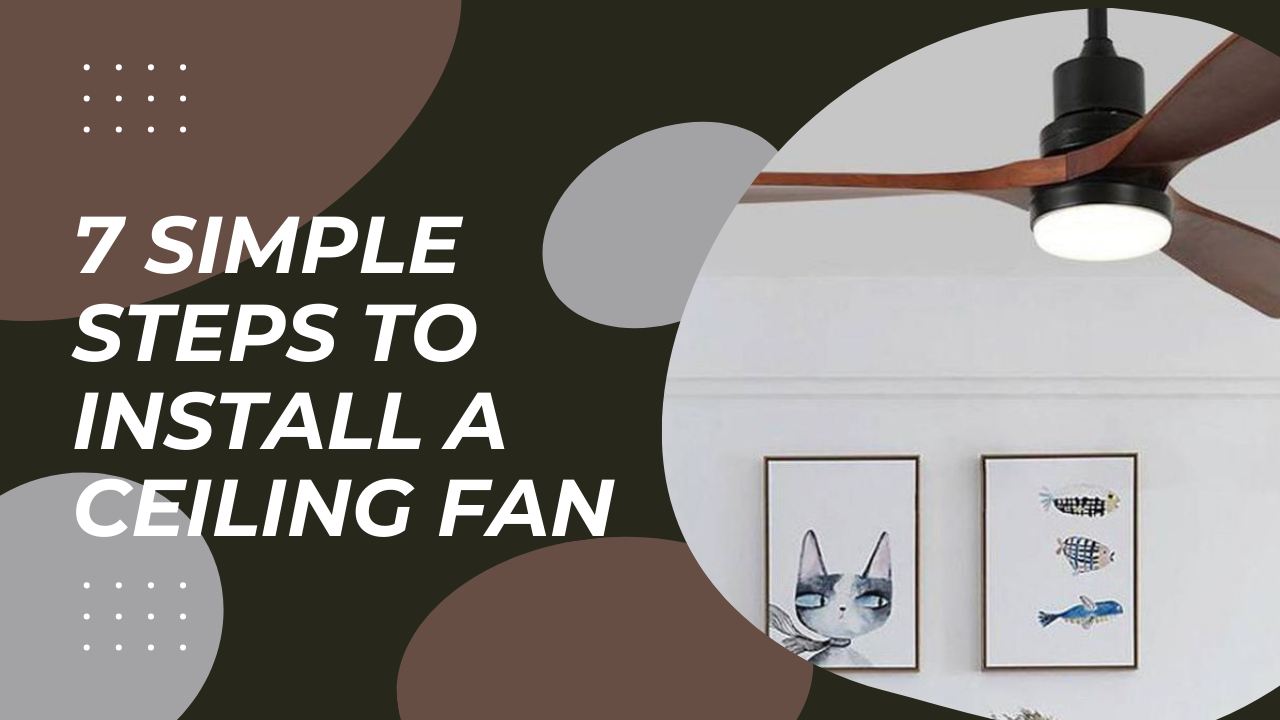Considering the rate at which electric bills keep rising, most homeowners are beginning to install ceiling fans to save the cost of running the air conditioning all day. It is a great idea especially if you just moved houses or you are considering remodeling.
Installing a ceiling fan is quite straightforward especially if you follow the instructions that our professional electricians have put together in this article.
Here is a detailed guide on how to install a ceiling fan by yourself.
Tools and materials needed include a power drill, screwdriver, ceiling plate, ceiling fan, wrench, ladder drill bits, junction box, and electrical tape.
- Tidy Up The Floor
You are fixing a ceiling fan which implies that you would be making use of a ladder often. Ladders need to be balanced properly to give the stability required for the task. Therefore, it is necessary that you clear out the room or sweep the floor to remove any object that may pose a threat to your safety.
Take away every unnecessary item and distraction from the floor so you can be safe.
Once they are cleared out, you can be fully focused on the task at hand without needing to worry if you are properly balanced or not.
- Switch Off The Circuit
Another safety-related step you would to cross-check is switching off the circuit. The importance of this can not be overemphasized, switch off the circuit connecting the power to that area of the house as you do not want to run the risk of being electrocuted which has more repercussions than you can think.
While you are at it, it is recommended that you inform everyone else at home of what you are doing so they do not switch it back on unknowingly.
- Inspect The Electrical Connections
Now that you are sure that you are safe enough, you can focus properly on installing the ceiling fan.
Inspect the area where you would install the ceiling fan, and check for damaged cords or obstructions. If there is any, your ceiling fan would not function when the power comes back on.
To avoid doing a futile job, it is advisable to confirm the working condition of the electrical connections.
However since some areas need a special permit before electrical connections can be fixed, you might need to get a special permit or rather call professionals to help you out.
- Fix The Mounting Bracket And Junction Box
Now you have to mount the junction box and the mounting bracket.
Climb your ladder, position the brace into the hole in the ceiling, then twist until it is secured into the position with the ceiling joist.
Then fix the U-bolt bracket in the center bolt while making sure it is facing outwards.
After that is done, you can now fasten the cable wire by moving the junction box upwards and then securing the bolts with your screwdriver.
Now line up the mounting bracket with the junction box, this would help you slip in the wires through the center easily after which you tighten the bolts as much as you can with a wrench.
The more tightened the bolts are, the more secured your fan is.
- Install The Down rod
The down rod is what extends the distance from the ceiling to the fan blades.
There are different sizes of down rods which are dependent on the sizes of the ceiling fan.
You must ensure that the angle where to fix the down rod must be properly gauged. If the angle is too sharp, it runs a high risk so you will have to uninstall it to make adjustments.
- Install The Ceiling Fan
Check the motor wires and begin to fix them to the ceiling wires according to their color match. Then adjust and secure them into the junction box.
Afterward, place the ceiling plate over the mounting bracket and secure it with your screwdriver.
- Fix The Fan Blades
Fix the fan blades by securing the bolts to each side while someone passes them to you. You can also check the instructions in the fan package to help with it.
Finally! These are the steps you should follow when doing a DIY installation of your ceiling fan. However, if you are still uncertain or you do not have enough time, it is recommended that you seek the help of professionals.
